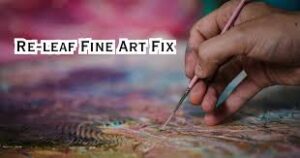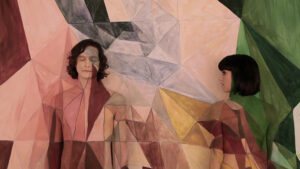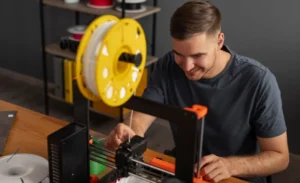AI art has taken the world by storm, producing unique, sometimes eerie, and unsettling images. One particularly interesting genre is AI art horror with IV needles. This blend of technology and creativity can result in art that feels both mechanical and terrifying. Imagine an image of a hospital setting, with IV needles inserted in strange ways, and dark, disturbing figures looming over the scene. In this article, we’ll explore how AI generates these unsettling images, why it’s appealing to horror fans, and what makes IV needles a symbol of fear in this genre.
What is AI Art?
Before diving into the horror aspect, let’s understand what AI art is. Artificial Intelligence, or AI, refers to machines and algorithms that can simulate human intelligence, including the ability to create artwork. Using deep learning and neural networks, AI can analyze countless images and create new ones based on that data. The result is artwork that may look like it was done by a human, but was actually produced by a machine.
The Role of Horror in AI Art
Horror is a genre known for its ability to provoke fear, anxiety, and discomfort. When applied to AI art, horror becomes even more chilling. With AI’s ability to blend reality and imagination, it can produce images that are disturbingly lifelike but also deeply unnatural. This makes AI-generated horror art particularly effective. When combined with medical themes, such as IV needles, the result is something both familiar and frightening, blurring the line between reality and nightmare.
Why IV Needles?
In the world of AI art horror, IV needles are a common and unsettling symbol. Needles, in general, are associated with pain, illness, and vulnerability. The sight of an IV needle can trigger fear of medical procedures or hospitals. When AI combines IV needles with nightmarish imagery, it creates an unsettling atmosphere of helplessness and fear. The cold, metallic feel of the needles, often portrayed in bizarre and eerie ways, plays into our fear of the unknown, heightening the horror effect. Also read here: Dark Moon Memorabilia Vstock: A Unique Collection for Fans
How AI Creates Horror with IV Needles
AI doesn’t experience fear, but it can create fear-inducing images by analyzing countless scary visuals and medical symbols. When tasked with creating AI art horror with IV needles, the system might pull from data like hospital scenes, needle-related images, and horror visuals. The resulting artwork could feature twisted IV lines, unnerving figures lurking in the shadows, or even grotesque portrayals of needles being used in unsettling ways.
The random nature of AI’s generation process also adds to the creepiness. It can place needles in odd, unnatural locations, creating an image that feels wrong on many levels. This unpredictability is what makes AI-generated horror art so intriguing and disturbing.
Examples of AI Art Horror with IV Needles
To give you an idea of how AI brings this concept to life, imagine the following scenes:
- A dimly lit hospital room where the IV needle snakes out of the wall, attaching itself to an empty chair, suggesting an unseen patient.
- A figure with a face obscured by multiple IV needles, each one dripping an ominous red liquid.
- Ghostly nurses floating down a hallway, their hands holding glowing IV bags, with the tubes stretching endlessly into darkness.
Each of these scenarios plays on fears of both the medical world and the unknown, blending them into art that feels deeply unsettling.
Why Do People Love AI Art Horror?
You might wonder why anyone would enjoy something so scary. For many horror fans, it’s about the thrill and the adrenaline rush. AI art horror takes familiar fears, like IV needles, and pushes them to new extremes. The unpredictability of AI also means that the art can surprise even seasoned horror enthusiasts. People love being unsettled, as it allows them to experience fear in a safe and controlled environment.
The Impact of AI on Traditional Horror Art
Traditional horror art relies heavily on human creativity, but AI-generated horror opens new doors. Artists can now collaborate with AI to produce even more terrifying images. Instead of working alone, human artists can guide AI systems to enhance their designs or let the AI create images based on their prompts.
Ethical Considerations of AI Art Horror
While AI-generated art can be fascinating and thrilling, it also raises some ethical concerns. When it comes to creating horror, especially something involving sensitive imagery like IV needles, there’s a line between art and potential trauma. Some viewers may find AI-generated horror, particularly medical-themed horror, triggering. It’s important for creators and consumers to be mindful of the impact such images can have on mental health.
Can AI Replace Hu man Artists?
A common question that arises is whether AI will eventually replace human artists. The answer is no – AI is a tool, not a replacement. Human creativity is still at the heart of art, even when AI is involved. Artists use AI to enhance their work or explore new ideas, but the emotion and intention behind art come from people. AI can generate an image, but it can’t feel the fear, joy, or inspiration that drives true creativity.
The Future of AI Art Horror
The future of AI art horror looks promising. As AI technology advances, we can expect even more detailed, intricate, and horrifying artwork. Themes like IV needles may continue to be popular, but AI may also explore new and unexpected symbols of fear. The combination of human imagination and AI’s processing power will likely result in a wide variety of chilling art that pushes the boundaries of horror.
Conclusion: A New Frontier in Horror
AI art horror with IV needles is a unique and fascinating blend of technology, creativity, and fear. It pushes the boundaries of what art can be, using AI’s ability to create unsettling and unpredictable images. For horror fans, it offers a new way to experience fear. The disturbing use of IV needles in this genre serves as a symbol of vulnerability, pain, and the unknown, adding to the horror. As AI technology continues to evolve, so will the ways it can scare us – and we can’t wait to see what comes next!






